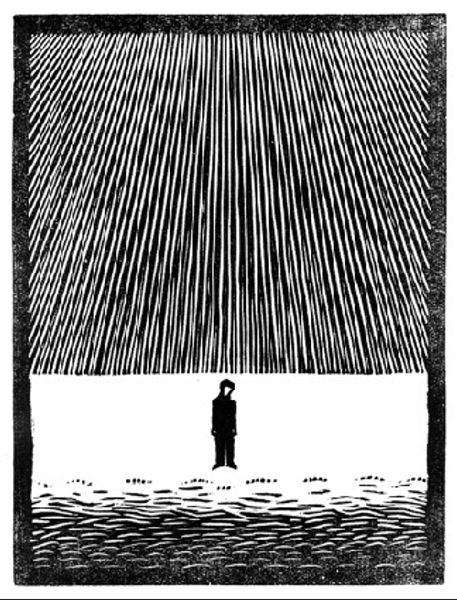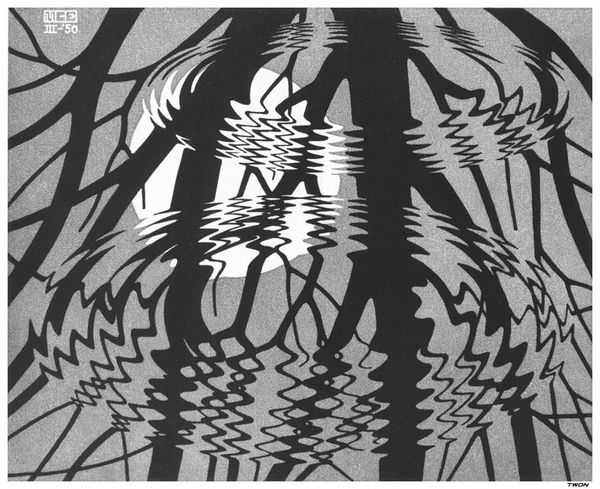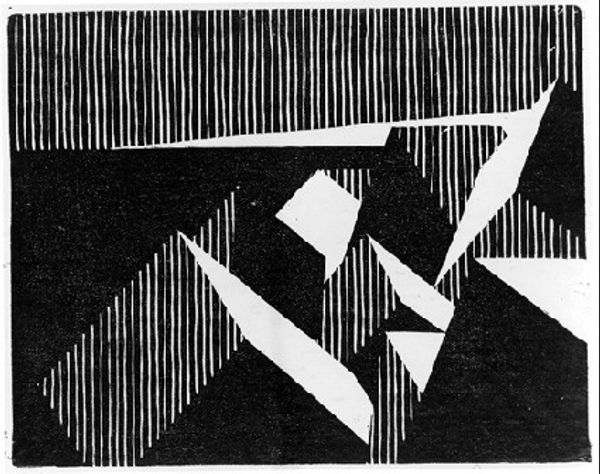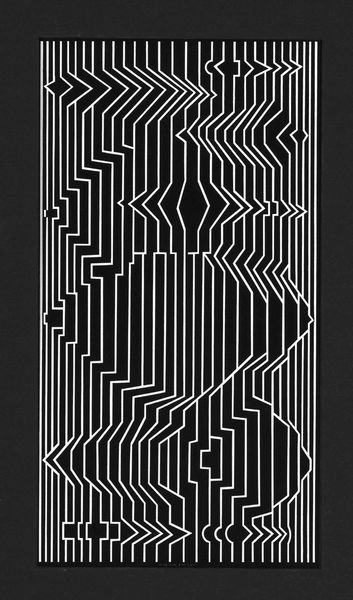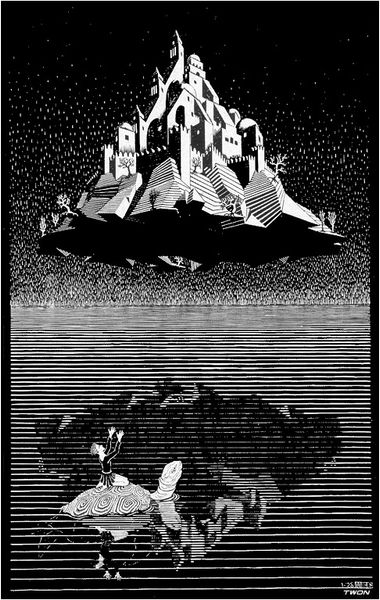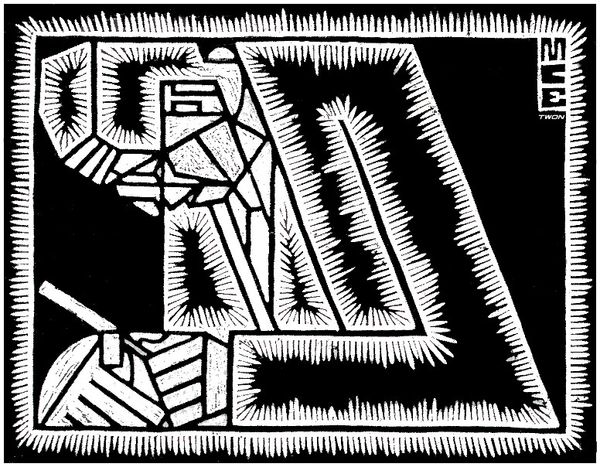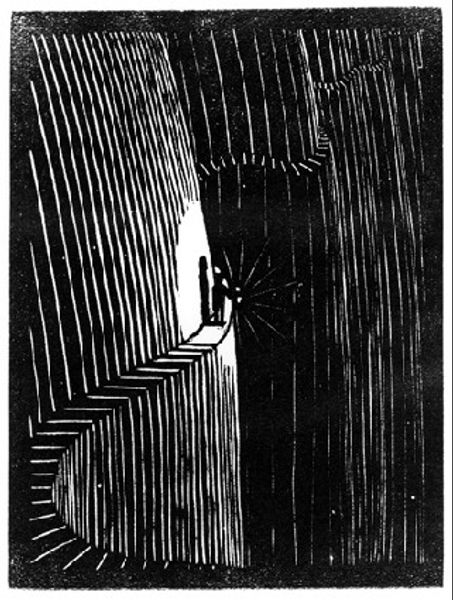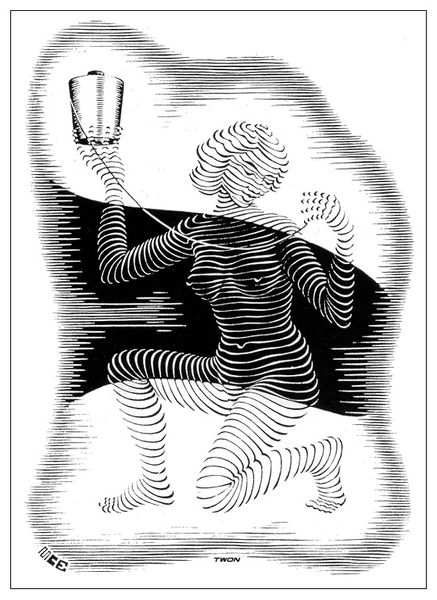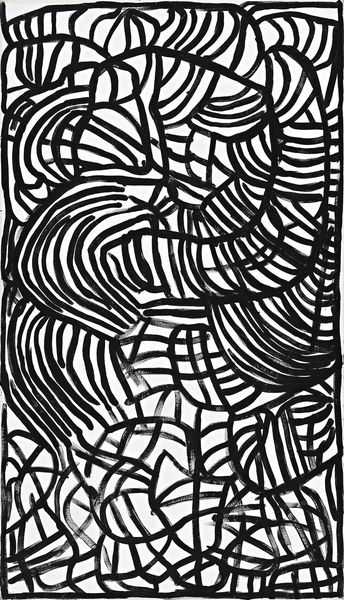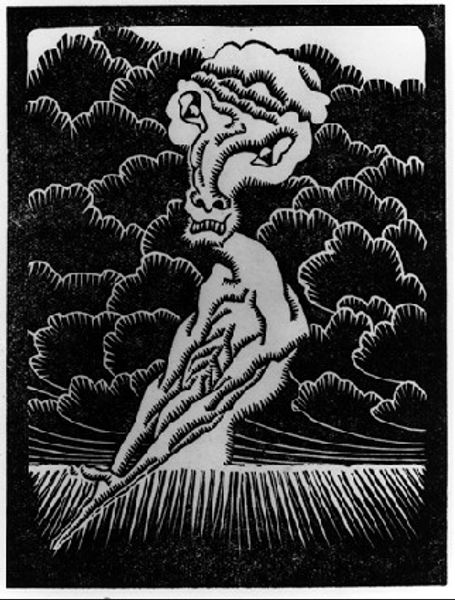
Copyright: Public domain US
Editor: This woodcut, "Hand with Fir Cone," by M.C. Escher, created in 1921, features a stark contrast between black and white. The patterns feel almost dizzying, but there’s this sense of something natural emerging. What strikes you about it? Curator: The hand itself is less about a specific individual and more a vessel – an archetypal symbol of creation and connection. The fir cone, deeply rooted in pagan symbolism and adopted within Christian iconography as representing the Tree of Life, emphasizes potential. Editor: Tree of Life… so there’s almost a creation myth happening? Curator: Indeed. Notice how Escher plays with pattern; the lines and zigzags surrounding the hand could suggest both a constructed reality, maybe even technological advance. Yet, emerging from this pattern is organic potential held gently, almost reverently. Editor: I hadn't thought about the pattern representing something man-made, juxtaposed with nature! Curator: Consider, also, the implications of a *hand*. Whose hand is it? Is it Escher’s? Does the hand serve as an autobiographical reflection on the artist as creator or some more symbolic stand-in? The image subtly urges reflection about nature, creation, and, most potently, transformation and memory embedded within visual cues. Editor: That’s amazing; seeing this work through its symbolic layers adds so much depth! I didn’t know there was this much to unpack. Curator: These intricate patterns pull you in! Every line contributes not just to the visual structure but also to the thematic resonance of nature’s persistence. Editor: Right, it’s much more than just a hand and a fir cone. The hand isn’t just holding; it’s presenting. The fir cone embodies hope. I’ll definitely think differently about Escher’s work from now on.
Comments
No comments
Be the first to comment and join the conversation on the ultimate creative platform.

